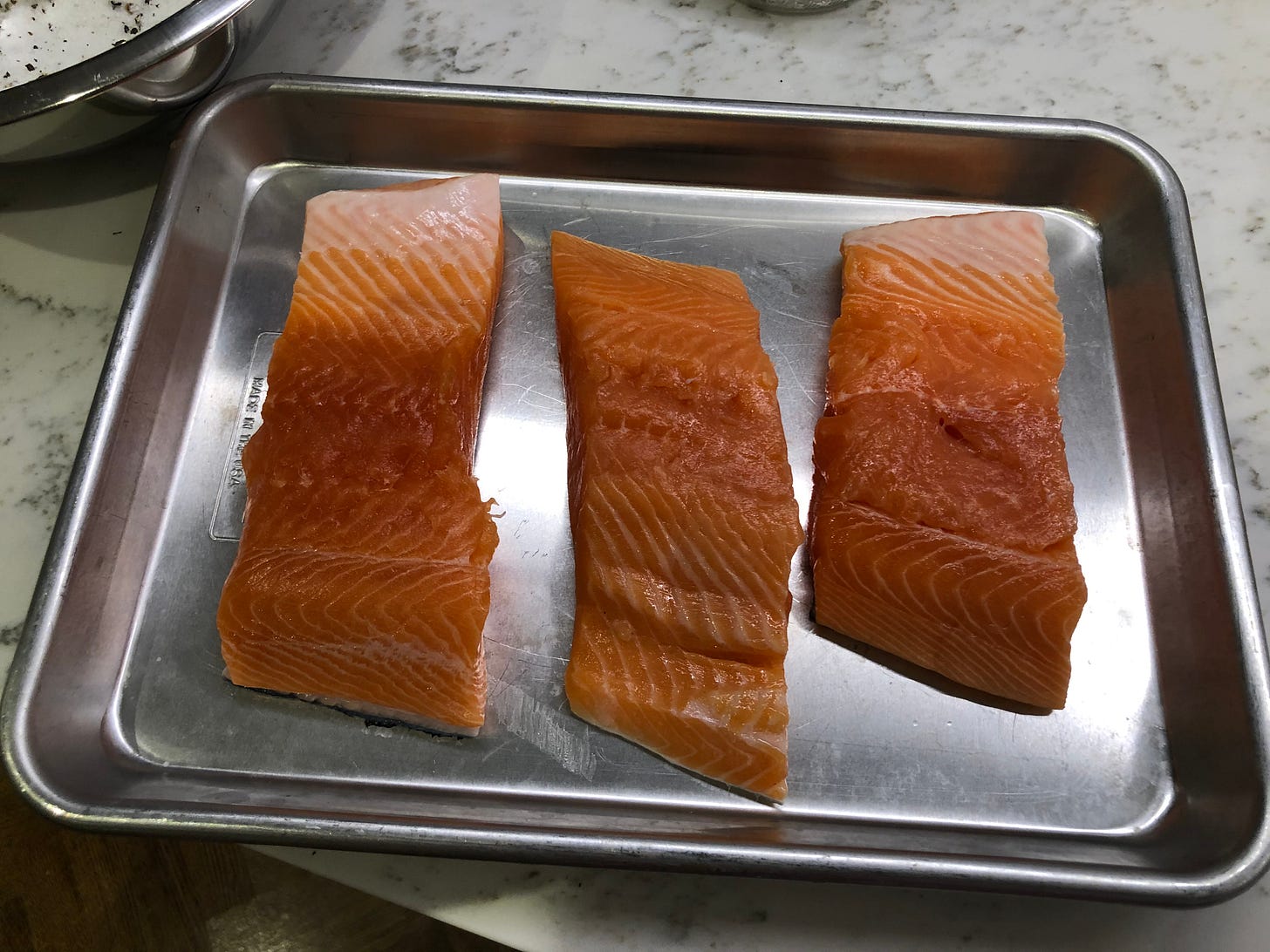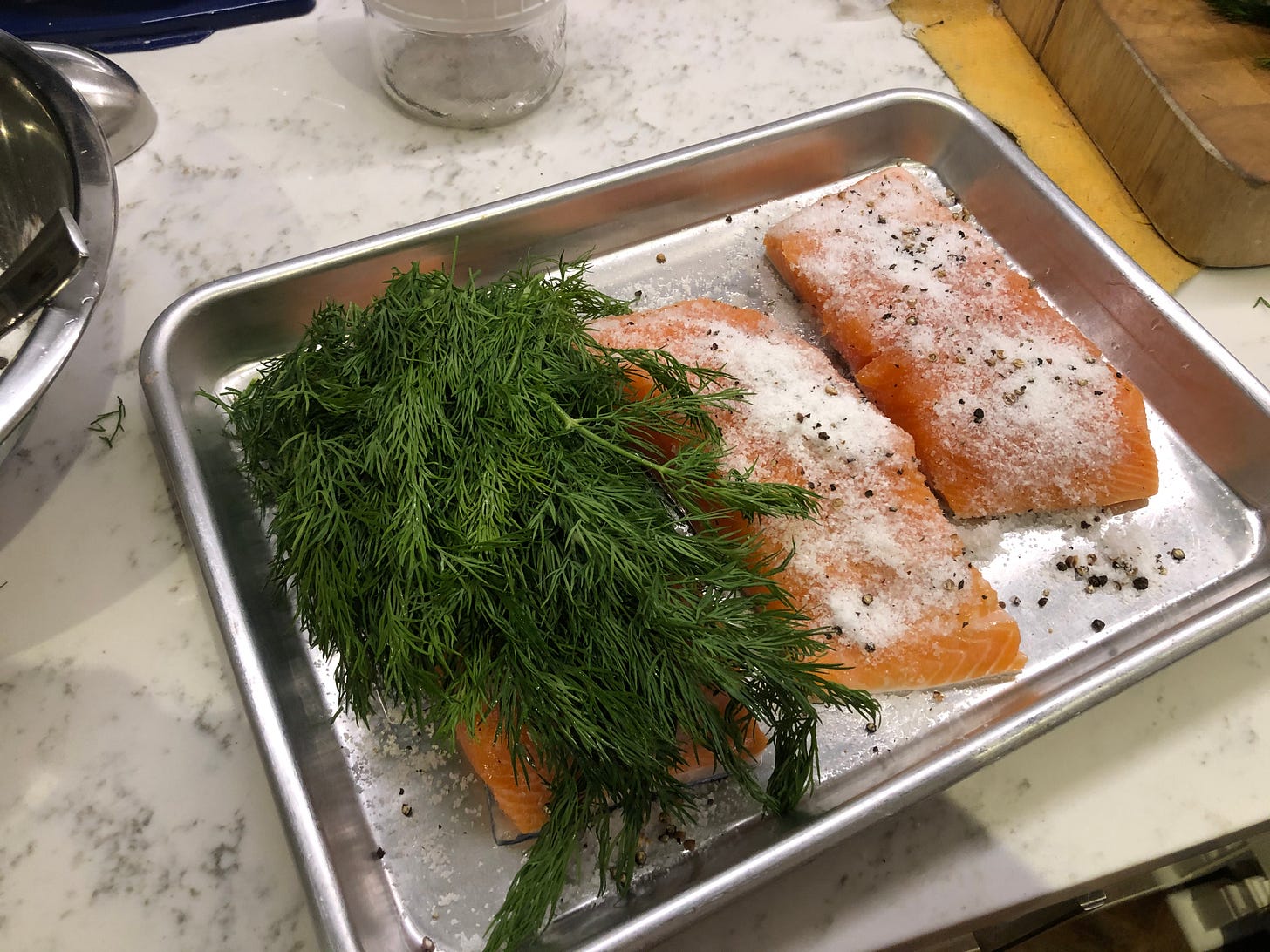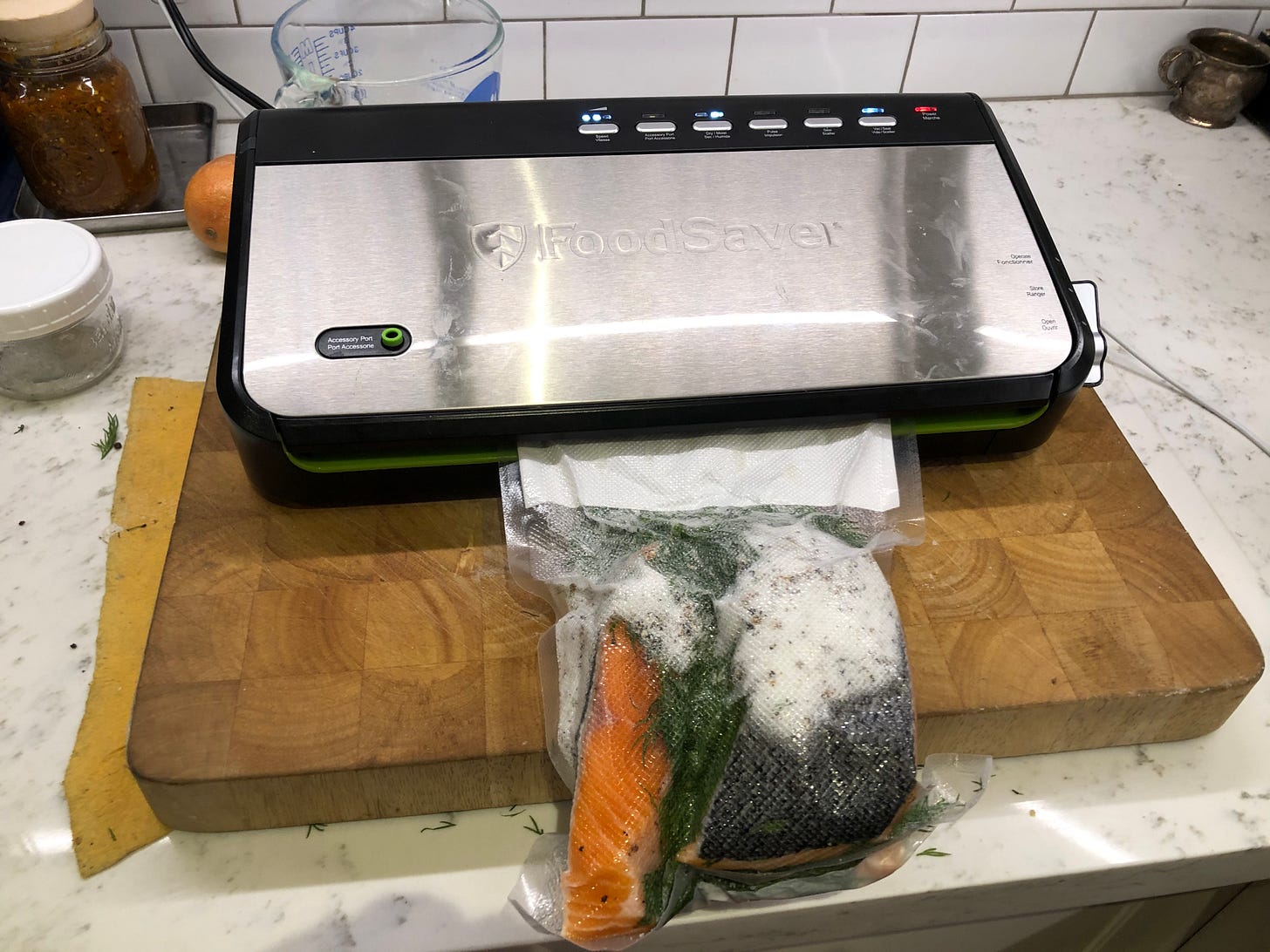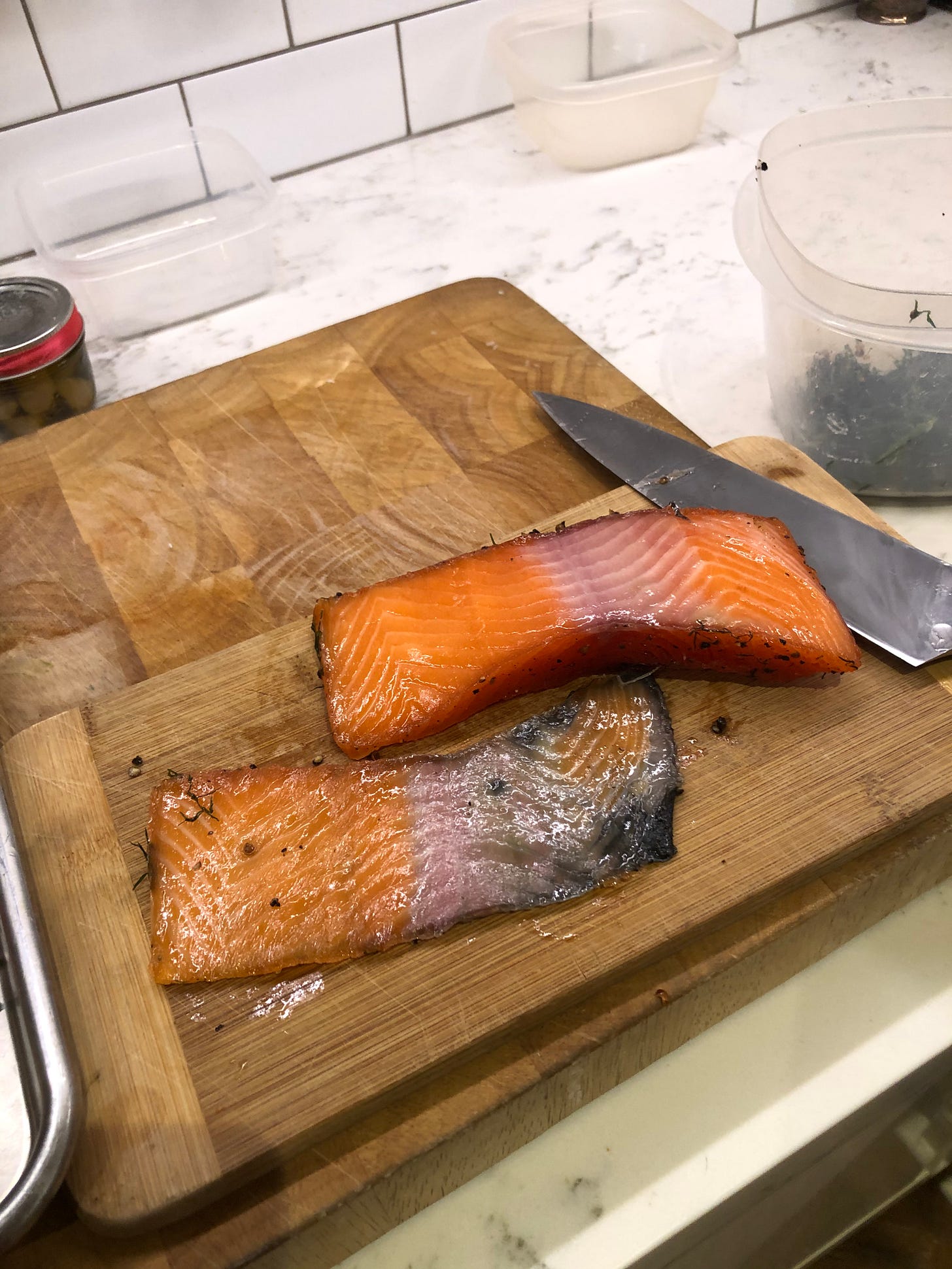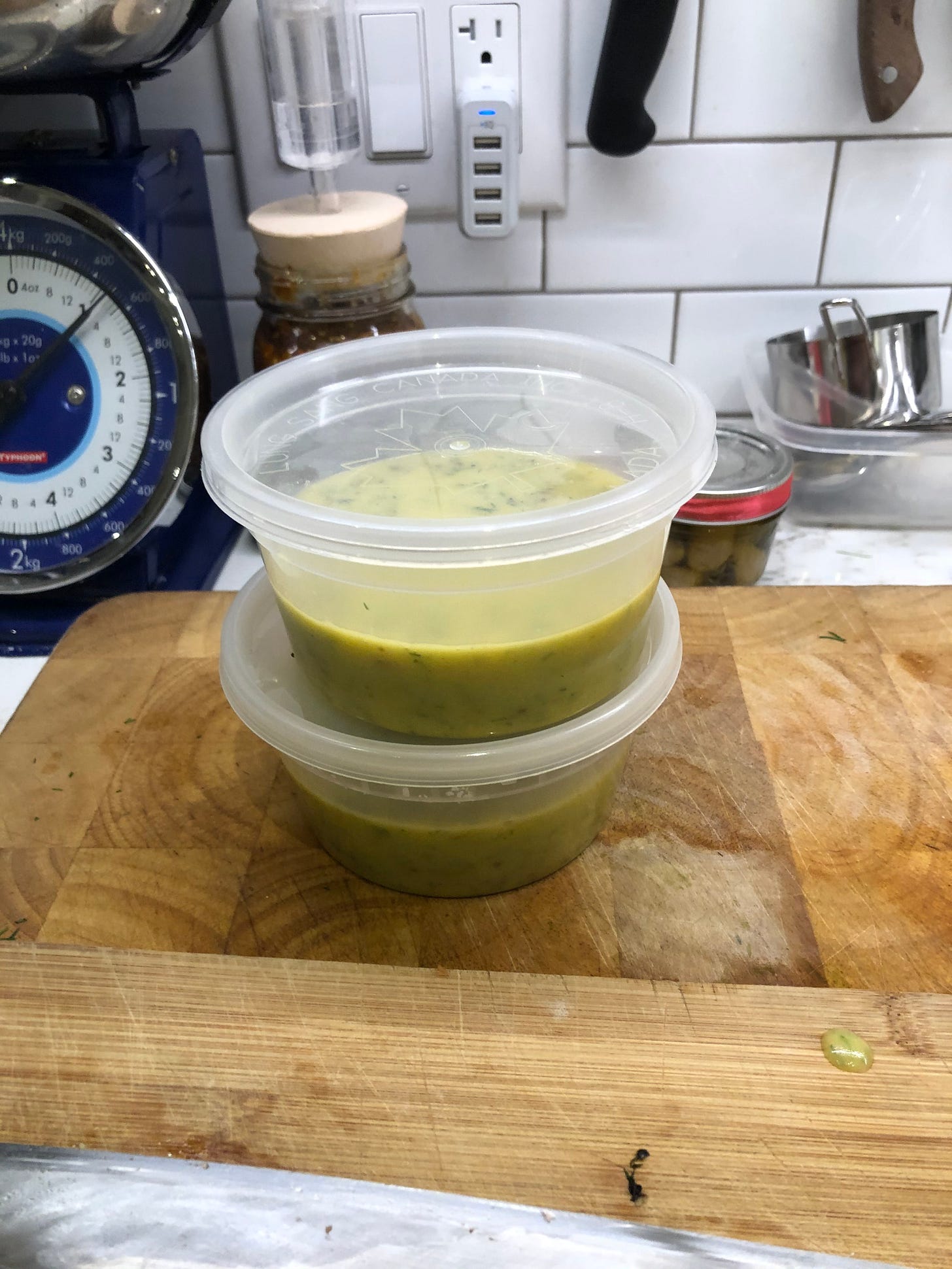5.5: Cure It Yourself
Almost literally the least you can do to make something delicious.
As I mentioned in the last issue, part of our Christmas Eve tradition with my wife, my sister, her partner, my father, and my stepmother is to have gravlax, the cured Scandinavian salmon. (In Swedish, grav, or “trench” + lax or “salmon = “buried salmon” because traditionally it was made by burying salmon in salt in a hole in the ground.) None of us is Scandinavian, but it has been on the table for the last fifteen years or so. I make it every year. Its ratio of effort to reward is astronomical; basically, if you can stir, you can make gravlax.
You need two pieces of high quality—the fattier the better—that are approximately the same size and shape. These are each about a half-pound, but you can certainly go smaller. No matter on how much you plan on making, get it in two equal pieces. (Ignore the third piece. I should have gotten two larger pieces. I thought I could be tricky with it and it didn’t work out.)
To assemble the cure, mix a half cup each of sugar and salt, then crush and mix in a tablespoon or so of black pepper. Because I like to add a little smoked meat hint to my gravlax, I add a tablespoon or so of crushed coriander seed as well.
Anoint the salmon with a splash of vodka. The New Basics says to use akvavit, the Scandinavian caraway-flavoured spirit, but but it’s literally just a few drops, so it’s not worth making a special purchase. Especially since caraway is disgusting.
Cover the skinless side of the salmon with the cure and then top with a very generous layer of dill.
Plop your second piece on top, skin facing up and salted side facing into the dill. This is why they need to be the same size.
The procedure from here usually involves putting this salmon-and-dill-doubledown into a baking dish, covering it with the rest of the cure and foil, and then weighing it down. Put it in the fridge and flip the fish every 12 hours. But that’s:
a) a mess because the salt and sugar draw a lot of moisture out of the fish and the dish becomes a mucky, briny mess
b) precarious balancing a tray with a couple of cans of tomatoes on top of a narrow, unstable pile of fish and fronds
c) a giant devourer of fridge space, which is probably at a premium during the holidays.
Instead, I use my Food Saver vacuum sealer. I just slide the sandwich into a bag, dump the rest of the cure evenly around it, and seal it up.
The pressure of the vacuum replaces the pressure of the cans of tomato and the whole package can be tossed anywhere in the fridge, although you should still flip it every 12 hours.
The cure wasn’t very evenly distributed when I sealed the bag; I wasn’t worried because I knew the liquid that would be drawn out of the flesh would eventually dissolve it and surround the whole package in brine.
There’s a fairly wide window for how long you can let it cure. The New Basics says 18 to 36 hours. In The New York Times, Gabrielle Hamilton recommends three days, although she says you can leave it up to ten and it will end up more like jerky.
Whatever time you choose, once you’re ready to serve, pull the fish from the brine and basically undo all the steps you’ve already done. Remove the dill and brush off as much of the peppercorns and coriander seeds as you can. (If you’ve used a vacuum sealer, some of them will be embedded in the fish and that’s fine.)
And then comes the only slightly difficult part of the whole operation: removing the skin. Put the fish skin side down on the cutting board and get out your sharpest long knife. Keeping the blade parallel to the cutting board, slide off the skin in long, even strokes. Use your other hand to put gentle pressure on the fish from above, which will keep it from moving. I push the top of the blade—the part farthest away from the edge—right against the cutting board to keep it steady. If it takes a few attempts to get all of the skin off, so be it! It’s not like you’ve got guests to impress this year! (You don’t have guests, right?)
And if you leave a little flesh on the skin, as I did here, it’s no big deal. In fact, it makes the little bonus treat even tastier. Slice the skin into thin strips and pan fry them until they’re crisp and you’ve got a great topper for your finished product. It’s not pictured here because we give them to my father every year.
The gravlax is now ready to be sliced. Do it thinly for manageable bites.

Top it with a thick vinaigrette with lots of mustard and chopped dill and serve on toasts or pumpernickel. Or, you know, just right off the cutting board.
As a starter, gravlax goes great with champagne or a martini. As of this writing, New Year’s Eve is three days away, which means you’ve got plenty of time to nip out to a local fishmonger, pick up two lovely pieces of fish and still have it ready to show 2020 the door! I went to Hooked in Kensington Market because they’ve got great fish and they only sell sustainable products. There’s lots of farmed salmon that is pretty dismal. And if you can’t find salmon, you can make gravlax with steelhead or trout. Just make sure it’s something you’re comfortable eating uncooked.
If you can mix a few things in a bowl, chop some dill, and skin and slice fish (Try it! It’s easier that you’re imagining!), you can make sure your last meal of this stupid year is a good one.



